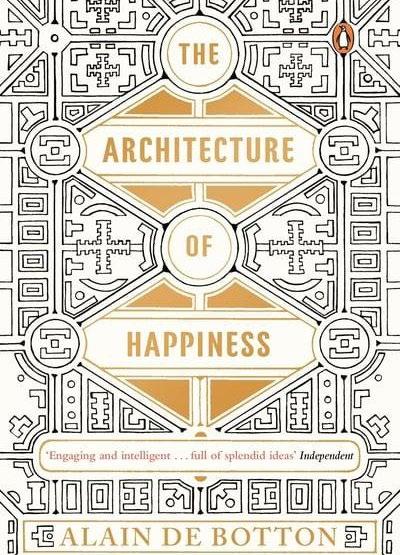
3 minute read
Outlining Aesthetics
Aesthetics; a word both referred to as an adjective and noun. As Satio (2008, p.1) states, it’s a way one describes art philosophically, through the action of pre examining that art, through judgement, experience and quality. The buildings which we find appealing, have some sort of value to us, as De Botton (2007, p.75) highlights that….”The buildings we admire […] whether through their materials, shapes or colours, to such legendarily positive qualities as friendliness”. This quote shows that when making a judgment on a building, the appearance of the building is considered holistically, as we base our opinion on factors like comfort, surrounding, and access.
Having gathered the above information, I went ahead and created my own primary research, where I gathered ten participants who wanted to take part in my questionnaire. This questionnaire was to help me get people’s opinion on what they distinguish as aesthetically appealing. The next task was to find out if they think sustainability limits aesthetics of a building. Figure one, shows the results were inconclusive, as half of the participants agreed and the rest disagreed. It was to read this in their statements. However, comparing this to figure two, were they had to select one of the buildings that they found appealing, then state if it’s a passivhaus building. Majority of the participants selected those buildings which were in fact passivhaus buildings, without knowing and not many selected those which weren’t passivhaus buildings. The findings demonstrated that this topic of aesthetics is very subjective as each participant had its own opinion, but what was interesting to see was how those who selected the passivhaus buildings, didn’t seem to agree that such buildings can be both sustainable and appealing. Therefore, to define what others find appealing, factors such as design, location, context, windows, lightening and so on., play a huge role.
Advertisement

Participants Yes, explain your answer No, explain your answer
A
B
C
D
E “Yes definitely, sustainability limits the aesthetics as there are some rules and this might influence on the materials you choose, their thickness so con-sequently you will have less space. But it’s tricky as sometimes sustainable materials appear good and sometimes not, but overall, I think sustainability limits the aesthetics”.
“I do think sustainability limits the aesthetics of a building. Not necessarily negatively, but I think there are less forms a building can take with the materials offered if it is truly sustainable”. “Yes, in my opinion I believe that a sustainable building doesn’t look nice for reasons such as, it doesn’t sit well with its surrounding and because it has to follow certain rules, the aesthetics then get left out”. “No, because it depends on how you design and the budget of the cost. Most air vents or solar panels can be almost covered or hidden. They could be hidden behind cladding or placed on the roof so it’s only visible from bird’s eye. However, features such as triple glazing windows are harder to hide unless you make the part of the design”.
“No, I don’t think sustainability limits aesthetics, because there’s amazing buildings (which I think look great) like Singapore which are much more advanced than what we see here, vertical forest types and they are completely sustainable
“No, I don’t think sustainability limits the aesthetics, because buildings can be beautiful with the right, sustainable material choice (like timber) and how it is built, by hiding or exposing all the features that make a building sustainable”.
H “Yes, sustainability impacts aesthetics because quite often the materiality, cost and design intensions change the form of the building. An architect might choose a certain material for the building cladding that is more sustainable but looks less attractive to the public”.
“I think that sustainability does limit the aesthetics of a building because it doesn’t take into consideration the design aspect of it, as there might be more pressure or a higher desire on just focusing on aspects which will positively have an impact on making the environment a better place”. “I actually don’t, if anything I think it enhances the beauty. I feel like when you use sustainable materials, something about the building looks more ‘alive’ and fresher. “No, it doesn’t affect the design I feel like this depends on the designer’s talent in taking those principles or standards while keeping the building appealing and aesthetically appealing”.
Figure One: Asking – do you think sustainability limits the aesthetics of a building?
Cost Materials


Shape Context


